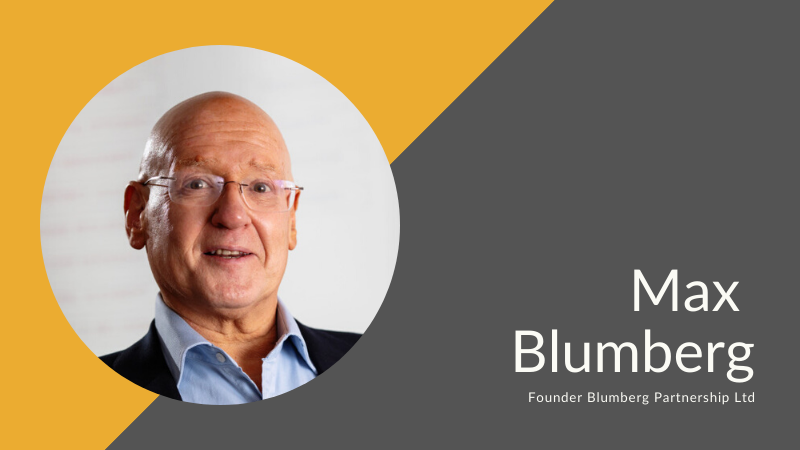Q&A with HR Expert Max Blumberg: How People Analytics Brought Science Into Hiring
Max Blumberg has worked with companies like Hilton, the BBC and Rentokil Initial to transform their sales force and help them with hiring through people analytics. Follow Max on LinkedIn, or his company website.
How did your career journey lead you to start Blumberg Partnership in the early 2000s?
I started life as an engineer and computer scientist, so I’ve always had an interest in technical things. Then I joined Accenture as a consultant, worked in Chicago for a while, and later started a technology company, which we IPO’d in the late 1990s.
After the IPO I went in a completely different direction and got my PhD in Psychology at the University of London, studying what makes up happy couple relationships. It was completely different from my technology background, but it did lead to an offer from a large company, Rentokil Initial, who saw my statistics background as a way for me to help them with their troubled sales division.
I was tasked to create a profile of the salesperson they should be hiring, kind of like the FBI does with serial killers. It was the beginning of a field known as people analytics, which has become a major part of recruiting and hiring for many large companies. People analytics brought science into hiring, so that the same kind of science can be applied to hiring an employee for a $100,000 salary as there would be to buying a $100,000 piece of equipment.
How do analytics help companies recruit and hire better?
Better hiring is a slow evolution, because most HR professionals are not numbers people—they’re used to relying on gut reactions to make hiring decisions. It’s a bit of a shock now, to get into HR and find out you have to know statistics. Some people are leaving the field; it’s kind of adapt or die.
However, it isn’t that we are relying 100% on data to make hiring decisions. It’s not usually that candidates take a test, pass the test, get hired. The decision is made by a human being, taking the available data into consideration in order to hire more effectively. Previously, it was just the human being making gut decisions.
What is the most common barrier to organizational effectiveness?
Communication is a huge issue, of course. That’s just a given.
Another one that presents even greater challenges at times is not empowering employees. Companies tend to reward employees as little as possible, and to share as few of the profits with employees as they can get away with doing. They are more concerned with giving their investors a good return, because that’s how capitalism works.
In reality though, not empowering employees can be a major barrier to organizational effectiveness because greater empowerment will lead to more profits and more opportunities for the company to grow.
What is one thing companies can do to improve their organizational effectiveness?
When companies underinvest in employees, productivity goes down. Employees may stay in the job, but you will only get the minimum amount out of them so they can avoid losing the job. If you pay employees a little bit more, and give the investors a little bit smaller percentage, however, in many cases the productivity will improve to the point that investors will end up getting more than they would have originally. Both sides benefit.
Most companies don’t do this, however, because investors are looking for short term gain. There’s no patience for making bigger gains over a longer period of time; investors just want to get what they can now and ignore the possibility of a bigger future gain.
“Assessments can identify both personality traits and learnable skills in order to hire the right people for a given job.”
I see on LinkedIn that you are conducting research. Can you talk about that?
Most of the research is confidential, of course, and I can’t mention the companies by name. But one kind of research I’m doing is related to manufacturing teams, specifically figuring out the best makeup of old/young, level of experience, and personality types for a team. It’s called team configuration.
Belbin created the idea of team roles and the concept of whether someone is a completer/finisher or is more of a creator. His work has never really been proven, but it is interesting to experiment with and research to see if it bears out.
What specific business issues can talent assessments address to help them be more effective?
There are two kinds of skills needed for most jobs: fixed traits and learnable competencies. It’s important to match up people’s fixed traits to the right kinds of jobs. For instance, if you are in sales, extroversion is a necessary trait to have. Salespeople who are introverts will be exhausted by that job, because they will need to spend a lot of energy faking extroversion and compensating for their introversion in order to succeed.
There are 5 main personality traits, and they don’t really change: conscientiousness, agreeableness, neuroticism (emotional stability), openness to new experiences, and extroversion. These things are set by the time you’re six years old. If you try to work against them in your job or in life, you will often times wear your immune system down and it will make you sick over time.
There are also learnable skills, like using a computer or typing fast, that are important for many jobs, but can be learned over time. Assessments can identify both personality traits and learnable skills in order to hire the right people for a given job.
This interview has been edited and condensed.
Let Narish International help you build higher-performing teams.





